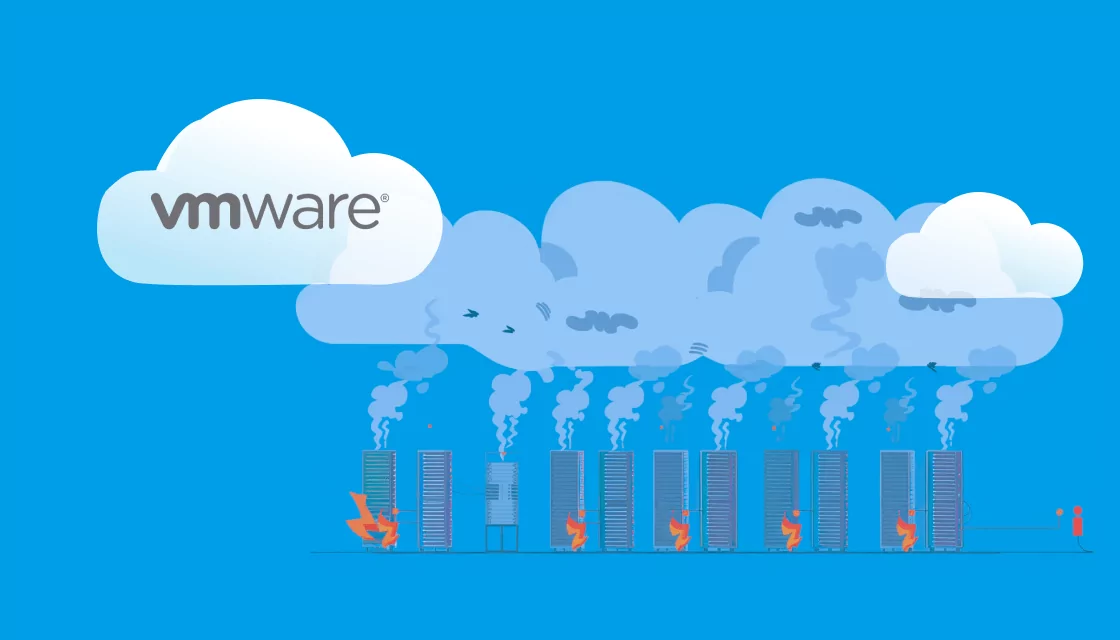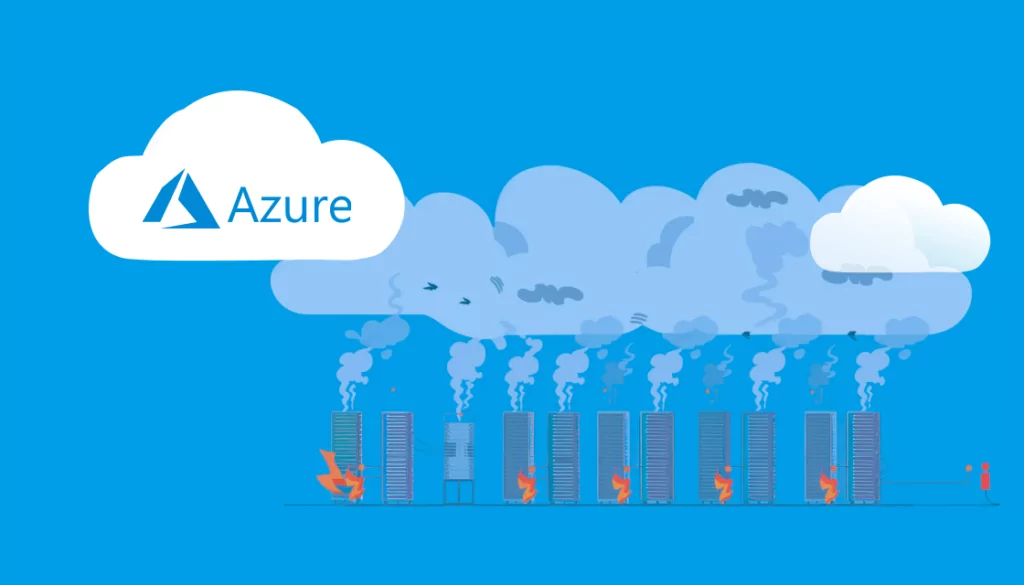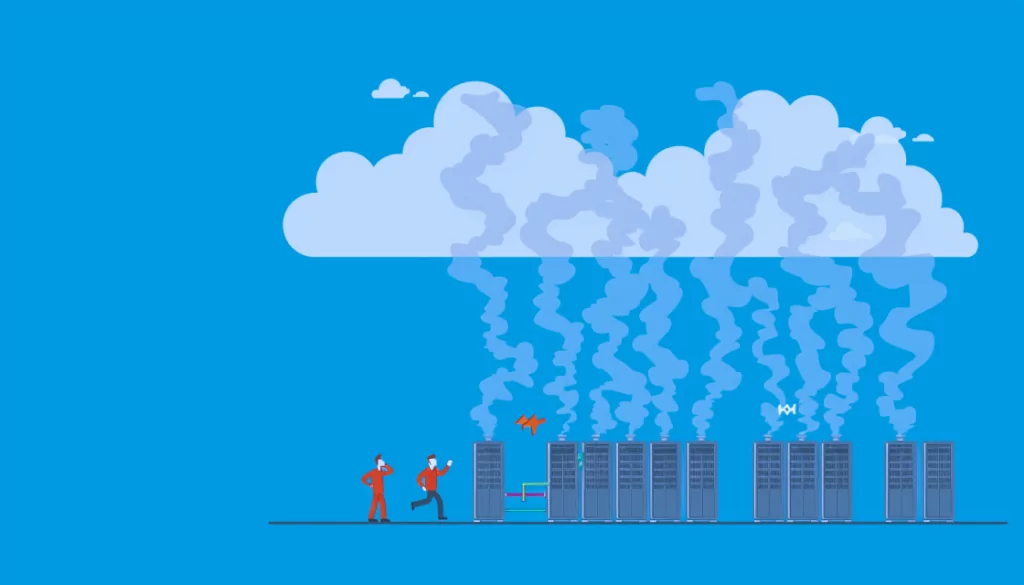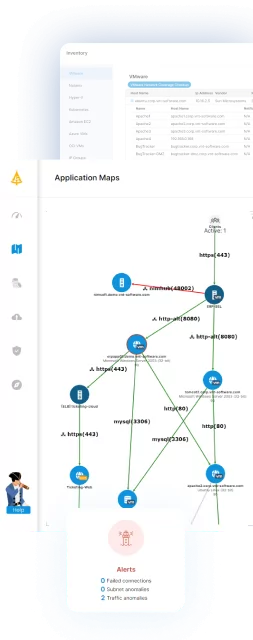What Is VMware Disaster Recovery?
Disaster recovery is an approach to protecting virtual environments against data loss and downtime due to unforeseen disasters or system failures. In the context of VMware, it includes technologies and practices to rapidly restore virtual machines (VMs) and their data, minimizing the impact on business operations.
VMware offers several products that can help automate the recovery process and make it more reliable. For example, VMware can replicate VMs to a secondary location, which can be either on-premises or in the cloud. This ensures that in the event of a primary site failure, operations can quickly switch over to the replicated site with minimal disruption.
Table of Contents
ToggleWhy Is VMware Disaster Recovery Important?
Disaster recovery helps maintain business continuity in the face of unexpected events. Downtime can result in financial losses, damage to brand reputation, and loss of customer trust. By implementing disaster recovery solutions, organizations can ensure minimal disruption to their operations, protecting their bottom line and maintaining service levels expected by customers and stakeholders.
The complexity and frequency of cyber threats such as ransomware attacks have increased the importance of disaster recovery strategies. VMware disaster recovery provides an effective defense mechanism by enabling rapid restoration of IT services and data access after a security breach or data corruption incident.
VMware Disaster Recovery Solutions
Here are some of VMware’s solutions that can be used for disaster recovery.
VMware Live Site Recovery (Formerly VMware Site Recovery)
VMware Live Site Recovery offers a comprehensive solution to automate and streamline disaster recovery processes. This service eliminates the risks associated with manual recovery through automated recovery plans. Organizations can achieve zero-downtime application mobility, allowing for live migration of applications and non-disruptive testing, even during business hours.
The service simplifies disaster recovery management with policy-based operations that are easy to set up and manage. Frequent non-disruptive testing ensures predictable recovery objectives are met. The automated orchestration workflows reduce recovery time to minutes, providing reliability and ease during disaster recovery scenarios. Additionally, automated failback at scale allows for a seamless return to regular operations, using centralized recovery plans.
Built to integrate with a wide range of replication technologies, VMware Live Site Recovery supports enhanced vSphere Replication with recovery point objectives (RPOs) as low as one minute. This flexibility ensures protection for thousands of virtual machines, managed through centralized recovery plans via the vSphere Web Client.
VMware Live Cyber Recovery (Formerly VMware Cloud Disaster Recovery)
VMware Live Cyber Recovery focuses on providing a secure and controlled recovery from ransomware attacks and other disasters. It features an on-demand recovery environment that is secured, built, and managed by VMware, allowing for a safe recovery process. The service includes live behavioral analysis with embedded next-gen antivirus to identify and contain both file-based and fileless attacks.
The ransomware recovery workflow integrates the identification, validation, and restoration of recovery points within a single user interface, offering a streamlined recovery process. Push-button VM network isolation prevents the lateral movement of ransomware, ensuring that compromised snapshots do not reinfect the production environment.
Immutable, air-gapped snapshots are stored in a secure cloud file system to maintain data integrity at the time of recovery. The guided restore point selection, informed by insights like VMDK rate of change and file entropy, helps in identifying the best restore points. VMware Live Cyber Recovery offers a robust and secure solution for disaster recovery, minimizing the impact of cyber threats and ensuring rapid restoration of services.
Related content: Read our guide to ransomware disaster recovery

Lanir specializes in founding new tech companies for Enterprise Software: Assemble and nurture a great team, Early stage funding to growth late stage, One design partner to hundreds of enterprise customers, MVP to Enterprise grade product, Low level kernel engineering to AI/ML and BigData, One advisory board to a long list of shareholders and board members of the worlds largest VCs
Tips from the Expert
In my experience, here are tips that can help you better manage VMware disaster recovery:
-
Automate Failover Processes
Use tools like VMware Site Recovery Manager to automate failover and failback, ensuring a reliable and faster recovery.
-
Regularly Test Recovery Plans
Schedule frequent DR drills to validate your recovery plans and train staff, catching any configuration gaps before real incidents.
-
Optimize Network Configurations
Ensure network configurations are mirrored between primary and recovery sites to avoid connectivity issues during failover.
-
Implement Incremental Backups
Use incremental backups to reduce replication times and bandwidth usage, making data recovery more efficient.
-
Maintain VM Prioritization
List and categorize VMs by importance so that essential services are restored in the correct order for seamless operations.
VMware Disaster Recovery Best Practices
Here are some of the measures that organizations can take to ensure an effective disaster recovery strategy with VMware.
Establish a Disaster Recovery Plan
Creating a disaster recovery plan involves identifying critical IT assets and designing procedures to restore operations following a disruption. The plan should define roles and responsibilities, outline recovery strategies for different disaster scenarios, and establish communication protocols to ensure all stakeholders are informed during a disaster.
Prioritize systems based on their importance to business operations, restoring the most critical services first. The disaster recovery plan should also include detailed documentation on the steps required to recover each system, including specific configurations and dependencies. Regularly review and update the plan to reflect changes in the IT environment or priorities.
Test the plan through simulated disasters to identify potential issues and ensure that all team members understand their roles in the recovery process.
Detect All Existing Servers
Identifying all servers within the IT environment is crucial for an effective disaster recovery strategy. Conduct a thorough inventory of all physical and virtual servers, noting their configurations, roles, and interdependencies. This comprehensive mapping ensures that no critical components are overlooked during the recovery process. Use automated tools for discovery and monitoring to maintain an up-to-date inventory, facilitating quick identification and recovery of essential servers.
VMware Migration Made Easy with Faddom
Faddom’s application dependency mapping provides critical information you’ll need before migrating VMware workloads, automatically discovering all VM instances and their dependencies. Faddom is agentless and doesn’t require credentials to scan your environment. It is cheap, starting at $10K/year, and maps the entire environment in real-time, automatically updating maps 24/7. One person can map an entire data center in an hour. Learn more about Faddom for data center migration, or try it yourself with a free trial!
Prepare a Recovery Site
When preparing the recovery site, ensure that the infrastructure and resources necessary for a swift recovery are in place and fully operational. This preparation includes provisioning adequate compute, storage, and network resources to support the replicated workloads. The recovery site should mirror the production environment as closely as possible to minimize compatibility issues during failover.
Establish secure and reliable connectivity between the primary and recovery sites. This is important for replicating data and enabling failover when necessary. Regularly test the failover process to ensure that the recovery site can take over without significant disruptions or data loss.
Use VMware Clustering Features
VMware clustering features such as High Availability (HA) and Distributed Resource Scheduler (DRS) enhance disaster recovery by ensuring that virtual machines (VMs) remain available in the event of a server failure. HA automatically restarts VMs on other servers within the cluster if their original host fails, minimizing downtime. DRS balances workloads across the cluster to optimize performance and prevent overloading of resources.
Incorporating these clustering features into the disaster recovery strategy can improve resilience and operational continuity. However, it’s important to remember that while HA and DRS provide mechanisms for maintaining availability and performance, they do not replace the need for a comprehensive disaster recovery plan that includes regular backups and replication.
Use Appropriate VM Recovery Order
Determining the correct order for VM recovery helps ensure system dependencies are respected and services are restored efficiently. For example, infrastructure services like Active Directory should be prioritized as many systems rely on them for authentication. Next, database servers that support critical applications should be restored to ensure data availability before bringing application servers online.
This structured approach minimizes compatibility issues and ensures a smooth recovery process. Adhere to an appropriate VM recovery sequence to reduce downtime, ensuring essential services are available to support dependent applications. This also simplifies the restoration process, allowing IT teams to focus on resolving issues that arise during recovery.
Prepare VM Storage Resources
Ensure sufficient storage capacity and performance at the disaster recovery site for a smooth failover process. Storage allocated for VMs must be able to accommodate both current data and any anticipated growth, preventing capacity issues. The storage performance must align with the demands of critical applications to avoid bottlenecks during recovery operations.
Consider also compatibility between production and DR site storage systems. Ensure that data can be replicated accurately, minimizing potential data loss or corruption during replication. Implement storage solutions that support features such as deduplication and compression to further optimize replication by reducing bandwidth requirements and improving replication times.
Related Content: Read our guide about VMware vs Nutanix
Conclusion
Implementing a robust VMware disaster recovery strategy is essential for maintaining business continuity and minimizing the impact of unforeseen events. By leveraging VMware’s solutions, establishing a detailed recovery plan, and ensuring the proper preparation of recovery sites, organizations can enhance their resilience against disasters. Regular testing and updating of disaster recovery plans ensure preparedness and the ability to swiftly restore operations, safeguarding critical data and maintaining service levels.









